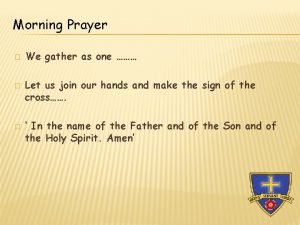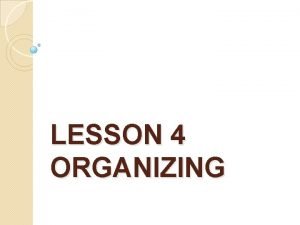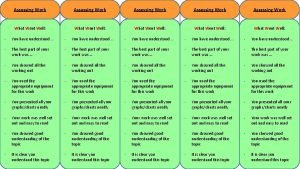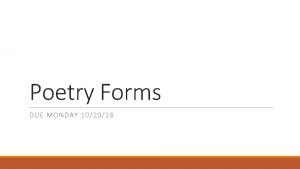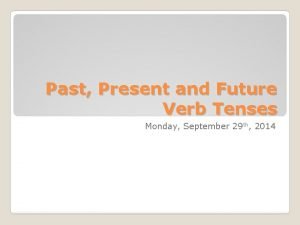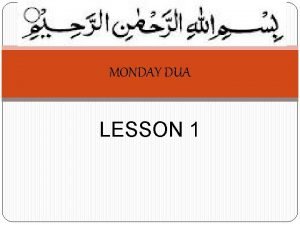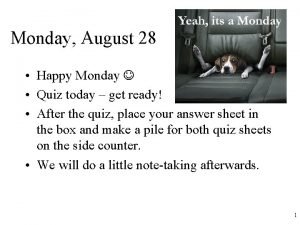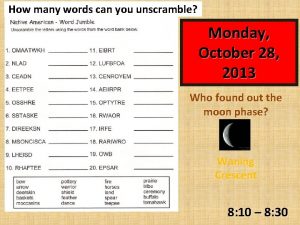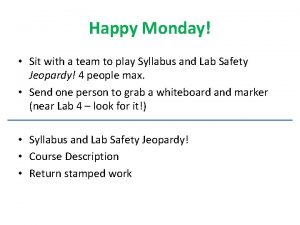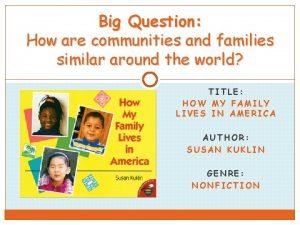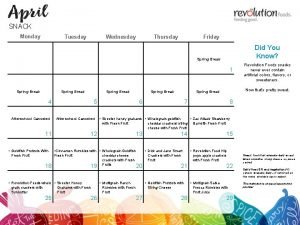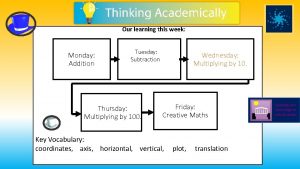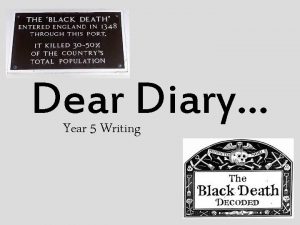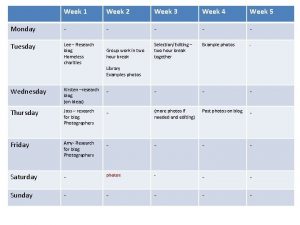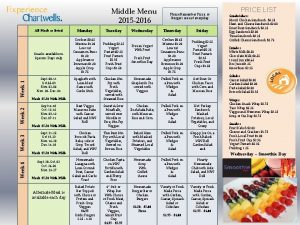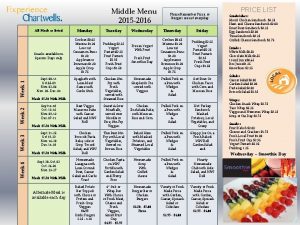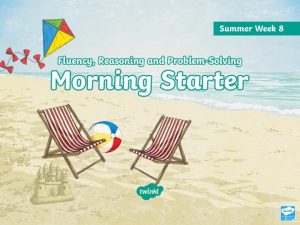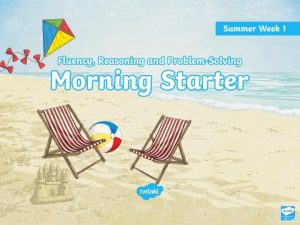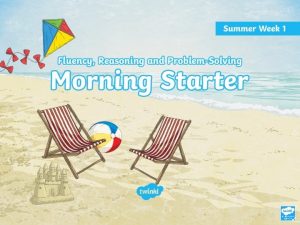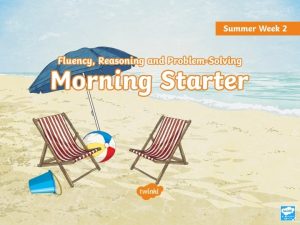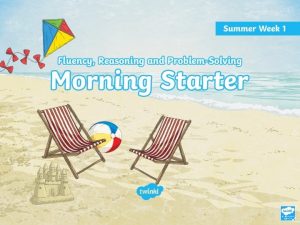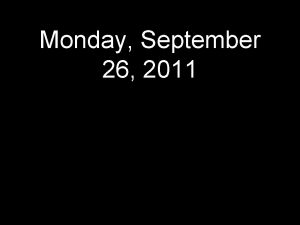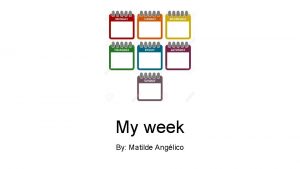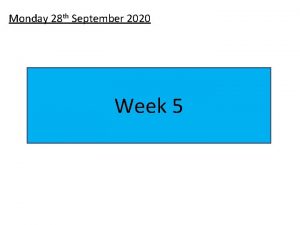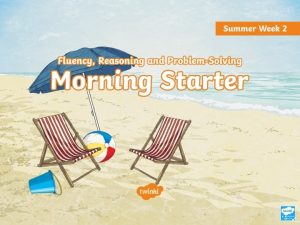Monday Week 2 Work Online Work What is
































- Slides: 32

Monday Week 2 Work – Online Work


What is Place Value? Numbers are made from digits - 0, 1, 2, 3, 4, 5, 6, 7, 8 and 9. When we create numbers using these digits, every digit has a place. Each place within a number has a value. Each digit in its place gives a number its overall value.

Place Value in Base 10 Our numbers use a place value system based on groups of ten. This means that each place value column is ten times larger than the column before. 3 -digit numbers are made up of hundreds, tens and ones. Hundreds Tens 1 group of 10 tens 1 group of 10 ones Ones 1 one

Applying Place Value to 3 -Digit Numbers Saying a number aloud can help us place each digit correctly when writing a number. For example, when saying the number 126 aloud (one hundred and twenty-six), we know it is made up of 1 hundred, 2 tens and 6 ones. Hundreds Tens 1 group of 10 tens 2 groups of 10 ones Ones 6 ones

Applying Place Value to 3 -Digit Numbers Say each number aloud, then add it to the place value chart. 3 -Digit Number four hundred and twelve two hundred and sixty eight hundred and thirty-one five hundred and ninety-seven Hundreds Tens Ones

Applying Place Value to 3 -Digit Numbers - Answers Did you write each number correctly? 3 -Digit Number four hundred and twelve Hundreds Tens Ones 4 1 2 two hundred and sixty 2 6 0 eight hundred and thirty-one 8 3 1 five hundred and ninety-seven 5 9 7

Partitioning Numbers When working with numbers, especially larger numbers, it can be very helpful to break the number down into smaller parts. Breaking a number down using place value can help us to see each smaller part that the number is made from. The process of breaking a number into smaller parts is called partitioning.

Partitioning and Expanding Numbers When a number has been partitioned, it becomes easier to work with. Each smaller part of the number can then be separated and expanded. Once expanded, the place value of each smaller part can be identified and added together. A 3 -digit number can be expanded into hundreds, tens and ones. For example, the number 365 can be expanded into 300, 60 and 5. 365 = 300 + 60 + 5

Expanding 3 -Digit Numbers Expand/Partition the 3 -digit numbers below into hundreds, tens and ones. 981 = + + 237 = + + 546 = + +

Expanding 3 -Digit Numbers - Answers Did you expand each number correctly? 981 = 900 + 80 + 1 237 = 200 + 30 + 7 546 = 500 + 40 + 6

Drawing Place Value Blocks • Quick lesson on how to draw Place Value Blocks that will be applied for the next slide/task for your work: = 100 (100’s block/large square) = 10 (10’s block/long rectangle) =1 (1’s block/small square) Task for the next slide: You will be asked to roll a number using dice and then write the number that was rolled, draw it (what I'm about to show you) then write it using expanded notation: For example you might roll a 3, 6 and a 2 = 362 3 x hundreds 6 x tens 2 x ones This is what it would look like if you drew the number 362 (numbers that were rolled in the example)

Work: Partitioning/Expanding 3 -Digit Numbers • You will roll a 3 -digit number (using dice) for example you might roll a: 2, 3 & 4 • You will write the number down • Draw the amount using the correct place value blocks • Write number using expanded notation/partitioning Roll then Write H T Make/Draw Expand O 2 3 4 234 = 200 + 30 + 4

Tuesday Week 2 Work – Online Work

Quick Revision

Partitioning Numbers When working with numbers, especially larger numbers, it can be very helpful to break the number down into smaller parts. Breaking a number down using place value can help us to see each smaller part that the number is made from. The process of breaking a number into smaller parts is called partitioning.

Partitioning and Expanding Numbers When a number has been partitioned, it becomes easier to work with. Each smaller part of the number can then be separated and expanded. Once expanded, the place value of each smaller part can be identified and added together. A 3 -digit number can be expanded into hundreds, tens and ones. For example, the number 365 can be expanded into 300, 60 and 5. 365 = 300 + 60 + 5

Revision Questions: Expanding 3 -Digit Numbers Partition these numbers using expanded notation: 751 = + + 381 = + + 937 = + +

Expanding 3 -Digit Numbers - Answers: 751 = 700 + 50 + 1 385 = 300 + 80 + 5 937 = 900 + 30 + 7

Online Game: • Go to Studyladder: https: //www. studyladder. com. au/ • Go to Maths • Then click on the following folders in the correct order: Numbers and Place Value then Place Value • Activities: seen on next slide

Activities: 1. 2.

Wednesday Week 2 Work – Online Work

Quick Revision

Partitioning Numbers When working with numbers, especially larger numbers, it can be very helpful to break the number down into smaller parts. Breaking a number down using place value can help us to see each smaller part that the number is made from. The process of breaking a number into smaller parts is called partitioning.

Partitioning and Expanding Numbers When a number has been partitioned, it becomes easier to work with. Each smaller part of the number can then be separated and expanded. Once expanded, the place value of each smaller part can be identified and added together. A 3 -digit number can be expanded into hundreds, tens and ones. For example, the number 365 can be expanded into 300, 60 and 5. 365 = 300 + 60 + 5

Revision Questions: Expanding 3 -Digit Numbers Partition these numbers using expanded notation: 222 = + + 194 = + + 503 = + +

Expanding 3 -Digit Numbers - Answers: 222 = 200 + 2 194 = 100 + 90 + 4 503 = 500 + 3

Online Game: • Go to Studyladder: https: //www. studyladder. com. au/ • Go to Maths • Then click on the following folders in the correct order: Numbers and Place Value then Place Value • Activities: seen on next slide

Activities: 1. 2.

Thursday Week 2 Work – Online Work

Online Game: • Go to Studyladder: https: //www. studyladder. com. au/ • Go to Maths • Then click on the following folders in the correct order: Addition then Addition • Activities: seen on next slide

Activity:
 My favorite day is saturday
My favorite day is saturday Enum days sunday monday=5 tuesday=6 wednesday=7
Enum days sunday monday=5 tuesday=6 wednesday=7 Week by week plans for documenting children's development
Week by week plans for documenting children's development Monday prayer for work
Monday prayer for work Monday bell work
Monday bell work Thursday bell ringers
Thursday bell ringers 40-hour work week schedule examples
40-hour work week schedule examples 10 hour workday schedule
10 hour workday schedule What went well even better if
What went well even better if Monday tuesday wednesday thursday friday calendar
Monday tuesday wednesday thursday friday calendar Welcome back monday
Welcome back monday How _________ your last weekend?
How _________ your last weekend? Monday evening word
Monday evening word Monday morning prayer images
Monday morning prayer images On monday i (have) math and art
On monday i (have) math and art Vertical poem
Vertical poem Past tense of on monday
Past tense of on monday Dua for monday
Dua for monday Happy monday quizzes
Happy monday quizzes Monday.ocm
Monday.ocm There their they're examples
There their they're examples Sit2play down
Sit2play down Happy monday answer
Happy monday answer Happy fake monday
Happy fake monday Monday after easter
Monday after easter Good afternoon happy monday
Good afternoon happy monday Easter traditions in poland
Easter traditions in poland Thursday question of the day
Thursday question of the day Come monday morning
Come monday morning Monday math class
Monday math class Monday snack
Monday snack On monday and tuesday
On monday and tuesday Monday
Monday



